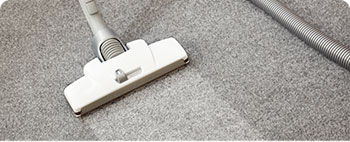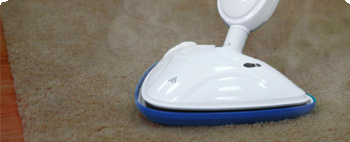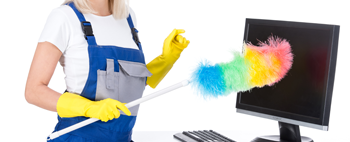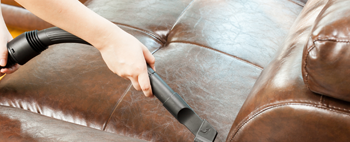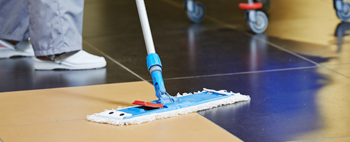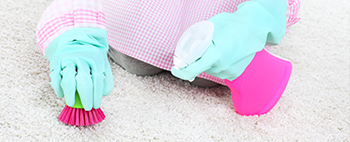Ensure Velvet Curtain Longevity with Safe Washing Tips
Posted on 19/09/2025
Ensure Velvet Curtain Longevity with Safe Washing Tips
Velvet curtains are a timeless addition to any room, offering both luxurious texture and exquisite aesthetic. However, their delicate nature often leaves homeowners wondering about proper cleaning practices. Preserving the rich color, soft pile, and overall integrity of your velvet drapes requires a thoughtful approach. In this comprehensive guide, you'll discover how to safely wash velvet curtains and practical tips to extend their lifespan for years to come.

Why Velvet Curtains Require Special Cleaning Methods
Unlike other fabrics, velvet is prized for its plush feel and sophisticated sheen. However, these very qualities make it susceptible to damage if not handled with care. Traditional cleaning methods may compress or distort the nap, leading to permanent marks or dullness.
- Water Sensitivity: Excessive moisture may flatten or shrink the pile.
- Color Fading: Harsh detergents and hot water can fade vibrant hues.
- Physical Distortion: Rough handling may cause crushing or wrinkling.
Therefore, understanding the right techniques is paramount to ensuring velvet curtain longevity and beauty.
Types of Velvet Curtains and Their Cleaning Needs
Before washing your velvet drapes, it's essential to identify the type of velvet fabric:
- Cotton velvet: Natural and breathable but prone to shrinking. Gentle cleaning is crucial.
- Synthetic velvet: Such as polyester, which tends to be more durable and stain-resistant.
- Silk velvet: Luxurious but extremely delicate. Best left to professionals.
- Crushed velvet: Features a pre-creased appearance, slightly more forgiving during cleaning.
Always check the care label first. Some velvet curtains are strictly dry clean only, while others may allow hand or machine washing in delicate cycles. This distinction is key to maximizing velvet curtain durability.
Preparing Velvet Curtains for Washing
Step 1: Read Manufacturer's Instructions
Locate and thoroughly read the curtain's care label. It often provides vital guidance.
Step 2: Test a Hidden Area
Before running a full wash, test your cleaning method or solution on a small, inconspicuous spot. This helps ensure there's no color bleeding or distortion.
Step 3: Dust and Vacuum
Remove surface dust and debris using a hand-held vacuum with a soft brush attachment. This simple step reduces friction and dirt buildup during washing.
Step 4: Remove Hardware
Detach curtain hooks, rings, and other hardware. This prevents snagging and damage during the cleaning process.
Safe Washing Methods for Velvet Curtains
Hand Washing Velvet Curtains
Hand washing remains the safest way to clean velvet curtains, especially for delicate or valuable pieces:
- Fill a basin with lukewarm or cold water.
- Add a mild detergent specifically designed for delicate fabrics. Avoid bleach or fabric softeners.
- Submerge the curtains and gently agitate with your hands. Avoid rubbing or scrubbing, which may crush the nap.
- Let soak for 5-10 minutes.
- Rinse thoroughly with cool water until no soap remains.
- Gently press out water (don't wring or twist).
Machine Washing Velvet Curtains
Some modern synthetic velvets allow for gentle machine washing. However, this should only be done if the care label confirms it is safe:
- Use a mesh laundry bag to protect the fabric during the cycle.
- Select the delicate or hand-wash cycle on your machine, using cold water.
- Add gentle detergent (no bleach or harsh chemicals).
- Avoid overcrowding the drum. Wash velvet curtains separately for best results.
Dry Cleaning Velvet Curtains
If you own silk, heavily lined or antique velvet drapes, professional dry cleaning remains the best method to ensure velvet curtain longevity. Expert cleaners have specialized tools and solvents to revive velvet's pile without causing damage.
Drying Velvet Curtains for Longevity
Proper drying is just as important as safe washing:
Air Drying Velvet Curtains
- Lay the curtains flat on an absorbent towel in a well-ventilated space.
- Never hang wet velvet directly, as the heavy, water-soaked fabric may stretch or distort under its own weight.
- Reshape gently while still damp, smoothing the nap in one direction with your hands or a soft lint brush.
- Flip occasionally to ensure even drying and prevent damp spots.
Avoid Direct Sunlight and Heat
Exposure to direct sunlight can cause fading, while high heat damages fibers. Always let velvet dry naturally, away from radiators or hair dryers.
Ironing and Steaming Velvet Curtains
Velvet's unique surface is highly prone to crushing and imprints--so standard ironing is discouraged.
- Instead, use a handheld steamer to remove wrinkles. Hold the steamer a few inches away from the fabric, allowing the steam to gently relax fibers.
- If an iron is necessary, place the velvet face down on a thick towel, use the lowest setting, and never press directly. A protective cloth (such as muslin) between the iron and fabric provides an extra safeguard.
Essential Maintenance Tips for Velvet Curtain Longevity
Regular maintenance is the secret to keeping your velvet curtains in pristine condition between washes.
- Vacuum weekly with a soft upholstery attachment to lift dust, lint, and pet hair without crushing the pile.
- Spot clean stains promptly using a small amount of diluted, mild detergent applied with a microfiber cloth. Dab--don't rub--so the nap remains undisturbed.
- Rotate your curtains or swap windows every few months. This ensures even exposure to sunlight and prevents uneven fading.
- Avoid harsh chemicals around velvet. This includes household cleaners, perfume sprays, and air fresheners, which may stain or weaken fibers.
Storage Solutions for Velvet Drapes
Whether you're storing velvet drapes during renovations or off-seasons, proper techniques can prevent permanent damage:
- Clean and dry velvet curtains completely before storing to avoid mildew and odor.
- Roll rather than fold to prevent deep creases and pressure marks.
- Store in breathable cotton bags instead of plastic, which restricts airflow and attracts moisture.
- Keep away from direct sunlight and humidity to maintain vibrant color and texture.
Frequently Asked Questions about Washing Velvet Curtains
Can I put velvet curtains in the dryer?
No. Tumble drying can shrink, distort, or ruin velvet's pile. Air drying is always recommended to prolong the life of your velvet curtains.
How often should velvet curtains be washed?
Because velvet is delicate, wash only when truly necessary--typically every 1-2 years or when visibly soiled. Regular dusting and spot cleaning help maintain cleanliness without frequent full washes.
Is steam cleaning safe for velvet curtains?
Yes, steaming is one of the safest methods for removing wrinkles and refreshing velvet between washes. Always steam from the back and test a small area first.
What detergent is best for velvet curtain washing?
Use a mild, pH-neutral liquid detergent formulated for delicates or woolens. Avoid products containing bleach, optical brighteners, or strong fragrances.
How do I prevent velvet 'crush marks?'
Handle wet velvet gently, avoid pressing or folding, and reshape while damp. Lay flat to dry. If any marks appear, light steaming or brushing can revive the nap.

Key Takeaways: Safeguarding Velvet Curtain Longevity
- Always start by reading the manufacturer's care label to determine the safest cleaning method.
- Spot clean regularly and vacuum using appropriate attachments.
- Hand washing and air drying are the safest options for most velvet curtains.
- Avoid high heat, harsh detergents, and wringing as these can irreparably damage velvet fabric.
- Store rolled and in breathable covers to maintain their beauty between seasons.
Conclusion: Enjoy Luxurious & Long-Lasting Velvet Curtains
Velvet curtain care doesn't have to be intimidating. With the right knowledge and a few simple precautions, you can ensure your velvet curtains remain elegant and lush for years. Regular, gentle care not only preserves their dramatic flair but also secures your investment in home decor.
Whether you own sumptuous silk velvet drapes or durable synthetic blends, following these safe washing tips will help to prolong velvet curtain lifespan and maintain a luxurious ambiance in any space. Remember, patience, gentle handling, and attention to detail are the cornerstones of successful velvet care.
Ready to refresh your velvet drapes? Bookmark these tips and enjoy a home filled with the lasting beauty and comfort that only velvet can deliver!








